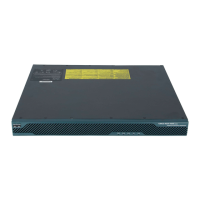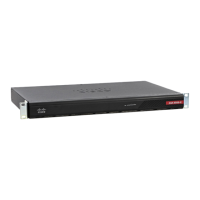1-33
Cisco ASA Series CLI Configuration Guide
Chapter 1 Configuring Clientless SSL VPN
Encoding
Limitations
Citrix Receiver clients access only one XenApp/XenDesktop server at a time.
Detailed Steps
If both username and group policy are configured, username settings take precedence over group policy.
Enter the following:
configure terminal
group-policy DfltGrpPolicy attributes
webvpn
vdi type <citrix> url <url> domain <domain> username <username> password
<password>
configure terminal
username <username> attributes
webvpn
vdi type <citrix> url <url> domain <domain> username <username> password
<password>]
The syntax options are defined as follows:
• type—Type of VDI. For a Citrix Receiver type, this value must be citrix.
• url—Full URL of the XenApp or XenDesktop server including http or https, hostname, and port
number, as well as the path to the XML service.
• username—Username for logging into the virtualization infrastructure server. This value can be a
clientless macro.
• password—Password for logging into the virtualization infrastructure server. This value can be a
clientless macro.
• domain—Domain for logging into the virtualization infrastructure server. This value can be a
clientless macro.
Encoding
With encoding, you can view or specify the character encoding for clientless SSL VPN portal pages.
Character encoding, also called “character coding” and “a character set,” is the pairing of raw data (such
as 0s and 1s) with characters to represent the data. The language determines the character encoding
method to use. Some languages use a single method, while others do not. Usually, the geographic region
determines the default encoding method used by the browser, but the remote user can change it. The
browser can also detect the encoding specified on the page, and render the document accordingly.
The encoding attribute lets you specify the value of the character-encoding method used on the portal
page to ensure that the browser renders it properly, regardless of the region in which the user is using the
browser, and regardless of any changes made to the browser.
By default, the ASA applies the “Global Encoding Type” to pages from Common Internet File System
servers. The mapping of CIFS servers to their appropriate character encoding, globally with the “Global
Encoding Type” attribute, and individually with the file-encoding exceptions displayed in the table,
provides for the accurate handling and display of CIFS pages when the proper rendering of filenames or
directory paths, as well as pages, is an issue.
